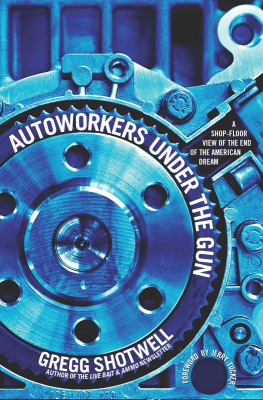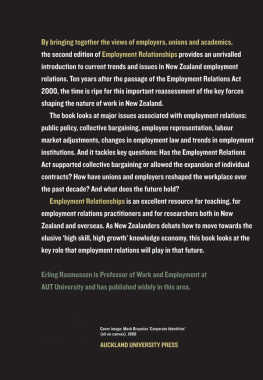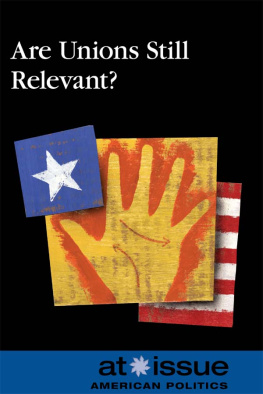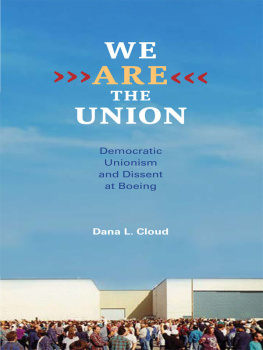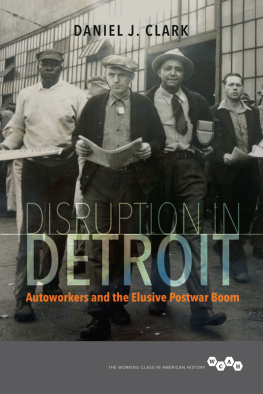
Copyright 2011 by Gregg Shotwell
Published in 2011 by Haymarket Books
PO Box 180165
Chicago, IL 60618
www.haymarketbooks.org
7735837884
ISBN: 978-1-60846-142-4
Trade distribution:
In the US, Consortium Book Sales and Distribution, www.cbsd.com
In Canada, Publishers Group Canada, www.pgcbooks.ca
In the UK, Turnaround Publisher Services, www.turnaround-uk.com
In Australia, Palgrave Macmillan, www.palgravemacmillan.com.au
All other countries, Publishers Group Worldwide, www.pgw.com
Cover design by Eric Ruder
Cover image by Nataliya Hora.
Published with the generous support of Lannan Foundation and the Wallace Global Fund.
Library of Congress cataloging-in-publication data is available.
10 9 8 7 6 5 4 3 2 1
For Sheila, my wife, to whom I owe my life and all the blessings it may contain: Sonia, Camille, and Colin In memory of Caroline Lund, Dave Yettaw, Pablo Lopez, and Camron Austin
Soldiers of Solidarity
We the People are at war. We need to develop Soldiers, not career opportunists. It will take time and patience. There will be setbacks and victories. Given time and effort, the law of multiplication will prevail. If one goes out and trains two soldiers, and they go out and do the same, and this continues, we will have our army. We the People are the Union. Miguel X. Chavarria, UAW Local 22
Foreword
Intelligent discontent is a mainspring of civilization. Progress is born of agitation. It is agitation or stagnation. Eugene Debs
This unique volume by rank-and-file autoworker Gregg Shotwell is a collection of urgent, well-documented struggle-in-progress protests over how the US auto industry management, particularly General Motors, and the United Auto Workers (UAW) union leadership engaged in a concerted effort to support an anti-worker industry agenda. That agenda enhanced profits and encouraged offshore investments at the expense of domestic autoworkers wages, benefits, working conditions, and dignity. This collection exposes in detail the results of the unions role reversal from adversarial defender of solidarity to champion of corporate-think.
Not only is this collection a catalog of attacks on autoworkers attacks that are continuing todaybut it is also a hopeful testament to the ability of a small, though growing, number of workers to understand what lies behind these attacks and to organize to fight them. As such, it tells a story that has largely been ignored by the mainstream media.
For scholars interested in the decline and fall of both the US auto industry and the UAW in the period from the 1980s to today, Gregg Shotwells detailed accounts of compelling events over the past twelve years will provide a literary slide show of otherwise unavailable materials. It details workers reactions to the sustained attacks by the auto bosseswho acted with the complicity of union bureaucrats.
The US auto industry and the UAW have a storied past. They have been the subject of much public exposure and media coverage over the years, ranging from the widely reported sit-downs in Flint, Michigan, in the late 1930s, which institutionalized the once-fractious industrial relationship, to the present shallow reporting of routine events in workers unequaled decline in economic and social power. The once constructively adversarial relationship between those heavyweights is gone, replaced these last thirty years by the calculated morphing of the union into a corporate junior partner.
Academics used to devote considerable attention to the rise of the UAW as a wage and benefit pacesetter for millions of autoworkers and other unionized industries and workers. For a number of years, the auto union was also studied as a progressive force in politics and a major supporter of social struggles. Those scholarly inspections fell off significantly in the 1970s. Nowas the UAW during the past thirty years has presided over the most destabilizing job and income loss in industrial historyoutside analysts observe little and write less about our unions forced march to the rear.
The limited exposure of the details of autoworkers downward economic spiral is most often provided by progressive outlier publications like Labor Notes and, with much more limited circulation, shop-floor newsletters, blogs, and websites produced under the threat of retaliation and rebuke by the UAW and corporate leadership. These organic, pained protests of individual UAW members or self-organized groups of rank-and-file workers give voice to the call for a democratic union and collective struggle against concessions and the culture of jointness that envelops todays UAW.
For the past twelve years, one of the foremost sources of dissent and comprehensive analysis inside the UAW has been a widely circulated publication titled Live Bait & Ammo, created by Gregg Shotwell, who at the time was a veteran GM fuel injection plant machine operator in southwestern Michigan.
Greggs journey to becoming a preeminent voice from within the ranks of the UAW and an open critic of the policies and practices of both General Motors and its UAW partner began inauspiciously enough. Between 1994 and 1996, Gregg wrote articles for the official local union newspaper of UAW Local 2151 in Coopersville, Michigan. But when the union officialdom found his observations and probing questions inconsistent with their defense of the UAW administrations agenda, they shut him down as a contributor. He promptly rolled out an even more probing underground series of articles and distributed them throughout his plant.
Local 2151 members began to rely on Gregg for the unabridged and spin-less version of events and a preview of the next indignity they could expect from management and, all too often, the unions claim of impotence. On the strength of his communication skills, and with virtually no campaigning, Gregg was elected as a delegate to the 1998 UAW Constitutional Convention in Las Vegas. That experience, coupled with his attendance at the 1999 Collective Bargaining Convention, provided a troubling picture of the future for workers like him and his parts-industry comrades.
His 1999 Convention Report (originally Live Bait & Ammo #10), included in this book, lays bare what he witnessed. Gregg saw how the corporate partnership agenda, secured on the false altar of corporate competitiveness, and the absence of democracy in the unions processes compromised the ability of the union leadership to steadfastly defend its members income security, job security, and working conditions.
Brother Shotwells attendance at the Bargaining Convention was enough to confirm for him his earlier parochial observations in the Coopersville local: GM was recklessly moving its capital away from US production and jettisoning its component parts supplier divisions, including the Coopersville plant, which would now become part of the newly created Delphi Automotive Systems. The UAWs role in this dispersal process had become suspiciously complicit, and the most fundamental questions in the minds of the affected rank and filers went unanswered. With keen powers of observation, a burglary victims sense of indignation, and fine-tuned writing skills, Shotwell set out to fill the vacuum.
While at the UAW Convention, Gregg had met and talked with a number of the original New Directions Movement (NDM) local union leaders from around the country, including NDM supporter and legendary UAW cofounder Victor Reuther. Gregg also found comfort in the prophetic literature that had defined the founding of the NDM in the first place.
For Brother Shotwell, the twin chickens of bedding down with the company and running a one-party state union had clearly come home to roost. Shotwell decided to use his considerable communications skills to turn a spotlight on the doublespeak and concessions save jobs hypocrisy of the corporate/union axis, and the era of Live Bait & Ammo was fully under way. His self-assigned research included a more thorough evaluation of the NDM, which was much deridedand fearedby the UAWs ruling Administration Caucus.
Next page
